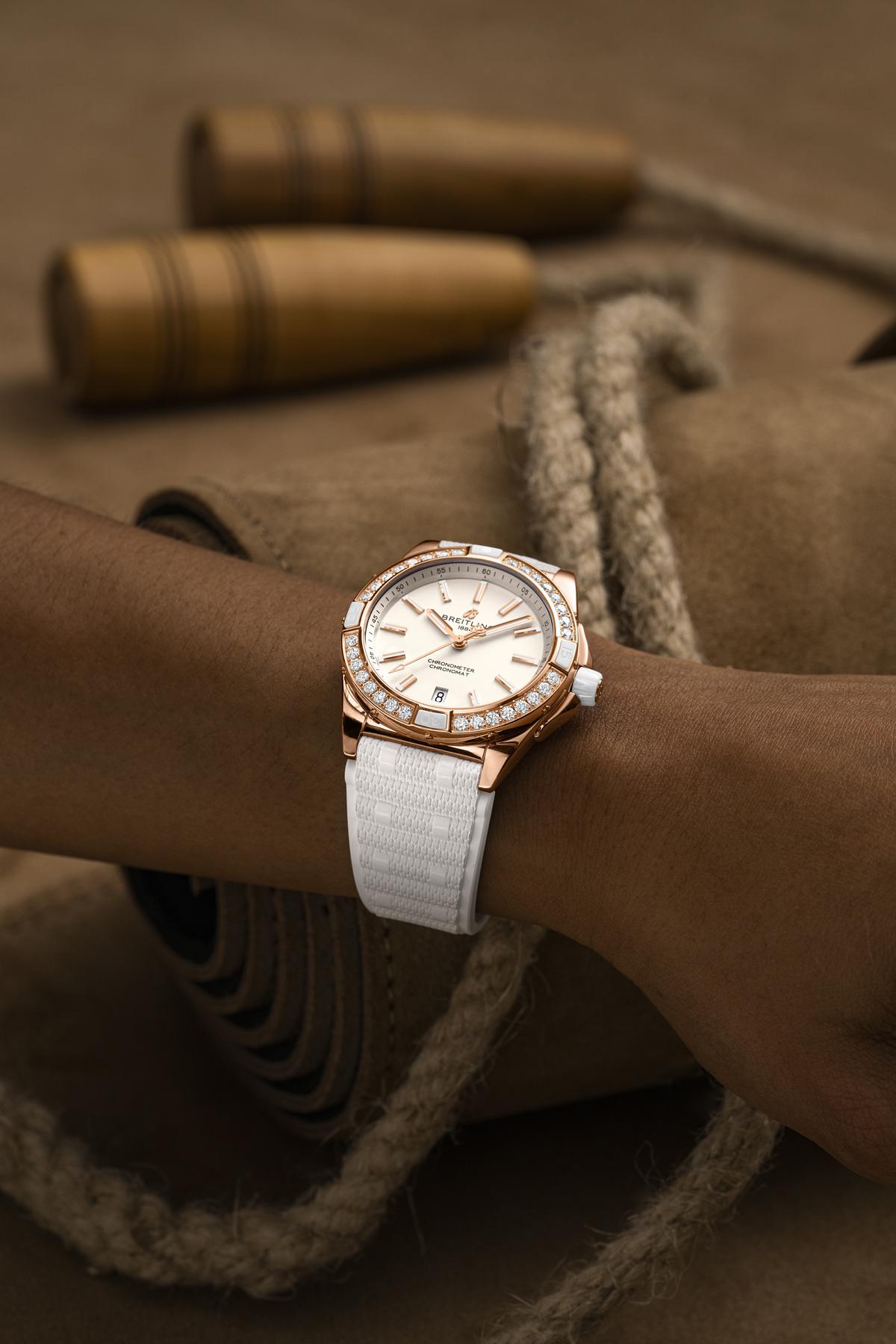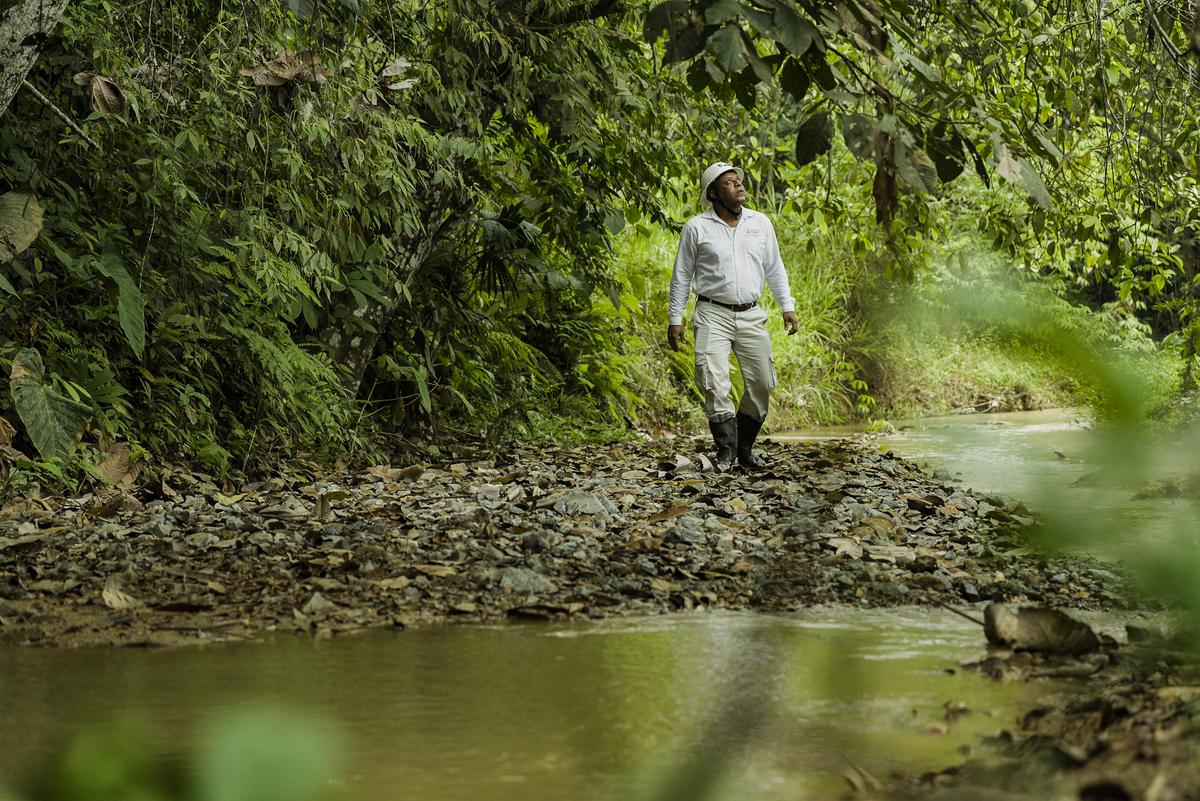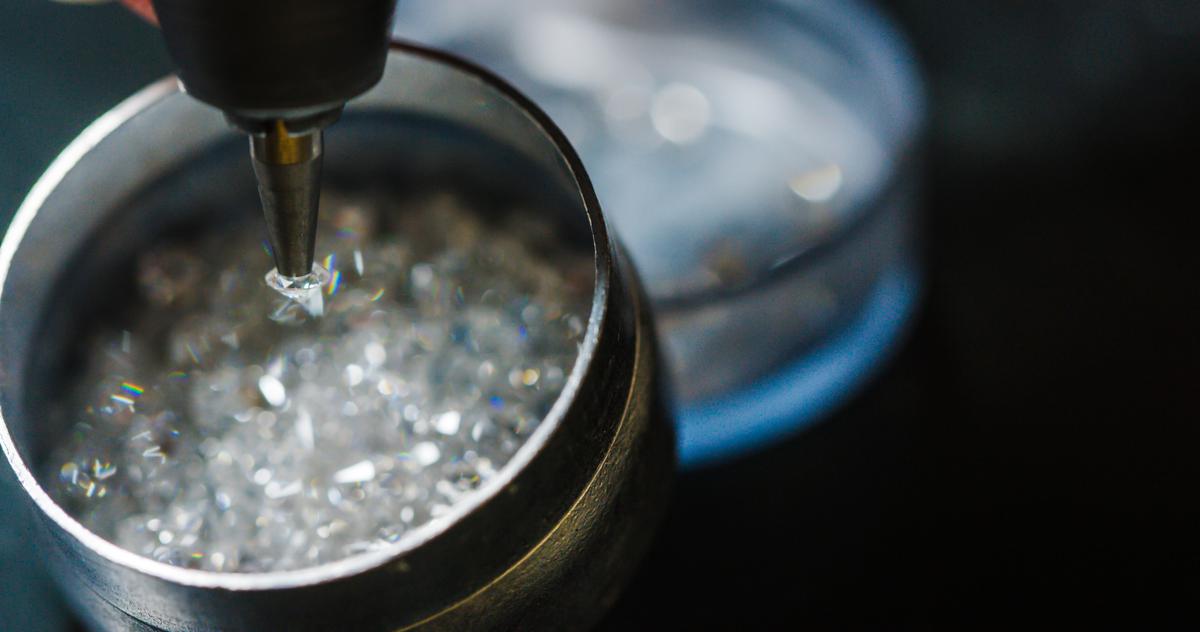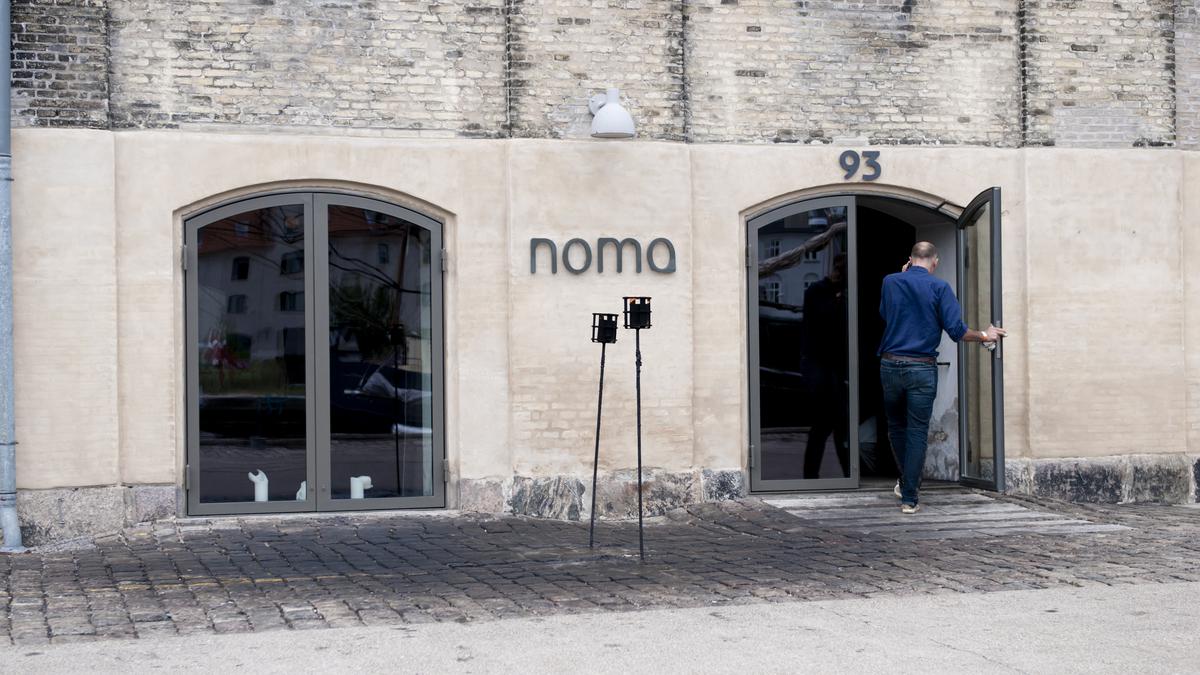With every stroke of its hand, a watch tells a story. At first, the naked eye may register only the sheen of the ceramic rider tabs and crown, or the diamond-encrusted bezel. Then the mind lingers: where was the diamond sourced from? Which hands cut, polished and refined its sharp edges? The watch may rest beautifully on one’s wrist in the present, but what of its past?
Knowing the history of what you wear is the beginning of making the diamond and gold industry sustainable, according to Aurelia Figueroa, head of sustainability at Breitling. In October last year, the Swiss company launched, Super Chronomat Automatic 38 Origins, its first-ever “traceable watch”. Traceable, because a customer could travel back to the origin of diamonds and gold used, to assess if the watch fits their idea of sustainability. According to Aurelia, the growth of LGDs overlaps with rising consciousness and is “a result of multiple social and environmental emergencies we’re facing today”.
A snapshot of the TouchStone mine in Colombia
| Photo Credit:
Special Arrangement
“We want to understand each player who’s been contributing , whether it was a lab-grown diamond grower in Surat or an artisanal, small-scale mine in Colombia, and to personally and directly assess the social and environmental measures taken at each step along the supply chain,” Aurelia says. This consideration from the origin to the final product sets in motion a narrative about ethics and responsibility, one that holds both the customer and the producer accountable.
The rise of lab-grown diamonds
Watchmakers and other manufacturers of luxury goods are wrestling with a growing concern within the diamond and gem industry: was the material in question ethically sourced, without causing irreversible damage to the ecosystem or being associated with human rights abuses? There are renewed questions about the sustainability of natural diamonds, which impact biodiversity, water and society. Some diamonds are harvested using giant, vacuum-like hoses on the ocean floor, which disturbs marine life and paralyses the microbial diversity of the seabed, to an extent that entire species could go extinct further affecting the food chain, according to experts.
These charges have been levelled against naturally sourced diamonds, the trade of which is tainted by suffering and exploitation. The COVID-19 pandemic further chewed away the purchasing power of customers, making natural diamonds unaffordable and unviable.
This explains why several manufacturers have announced a full-scale transition to lab-grown diamonds (LGDs), which are identical to the mined ones and subjected to the same rigorous quality tests. They are developed from a carbon seed placed in a microwave chamber in a laboratory. Intense gas and heat are applied to a diamond slice in vacuum, creating the conditions that allow the diamond to crystallise and grow.

The Breitling Super Chronomat Automatic 38
| Photo Credit:
Special Arrangement
LGDs represent a swiftly growing share of this glittering industry; India is poised to become the largest market for LGDs. In 2022, the country witnessed a sharp rise in LGDs exports worth $443 million which rose by 102% year-on-year, according to a report.
At Breitling, the consumer can attest that the overall environmental impact of LGDs on carbon, biodiversity, and water. “For the discerning consumer, who is concerned about a high-quality lab-grown diamond, and quality to them also includes social and environmental impact, in addition to the four Cs [cut, colour, clarity and carat weight], this is a very compelling choice,” Aurelia notes.
Sustainability paradigm
According to Aurelia, the discourse on sustainability has to be emboldened. “Sustainability is the defining issue of our time and addressing it in a meaningful way is at the heart of a relevant and credible approach to business,” she says.
“We wanted to offer transparency and traceability to the consumer — about the mine, diamond grower, exporter, refiner, cutter, polisher and setter to the consumer. So, the power is in the hands of the consumer,” Aurelia says. This information is stored in the form of an NFT, which is available to the customer and to the public with source map.

The refining and polishing process
| Photo Credit:
Special Arrangement
There are complex supply chains involved in producing each piece of watch or jewellery. The melee diamonds, for instance, are smaller diamonds weighing less than 0.15 carat, and are carved out of larger diamonds, which are then sold in parcels. This “made it difficult to attest to the social and environmental measures that were taken along the value chain for mined diamonds,” Aurelia explained.
The chain of transmission traverses through dozens of countries where these materials are traded, exported, processed and transformed into jewellery before they reach retailers. This journey is rarely documented, making it difficult for the customer to know whether the watch or jewellery is blotted with abuse.
Breitling’s focus on traceability and documenting the supply chain crystallises in absolute detail the otherwise hidden cost of the diamond industry, in addition to educating the customer about the anatomy of an accessory.
As Breitling commits to transition to LGDs by 2024, Aurelia adds, major focus will also be on engaging with local communities involved in the diamond industry. The company will contribute to a social impact fund that supports diamond-producing communities in India. Aurelia will visit Surat and Ahmedabad, where the company’s supply chain sources small-scale gold and diamonds, to understand and foster connection with the communities that revitalise it.

A snapshot of TouchStone, Colombia
| Photo Credit:
Special Arrangement
She adds, the focus will also be on women’s economic empowerment and social entrepreneurship for economic development. Once the focus pivots to traceability, companies can be motivated to find inclusive ways of measuring impact and engaging with local stakeholders.
India as an industry leader
India contributes to about 15% of the global production of LGDs, according to the Gem and Jewellery Export Promotion Council (GJEPC). Data shows that exports of polished LGDs from India jumped up to nearly 70% in the April-July 2022 to $622.7 million, while cut and polished mined diamonds fell around 3% to $8.2 billion. India has conferred a slew of incentives to manufacturers: by permitting 100% foreign direct investment (FDI) in the sector and slashing the GST rate from 18% to 5%. The Indian Government in the Union Budget this year, announcing a cut in customs duty on the seeds used in LGDs manufacturing along with a special research grant to facilitate the growth of LGDs in India.
These measures to support the industry, or the overall development of renewable energy sources, is potent enough to drive growth going ahead, Aurelia says.
The consensus is evident: India is well-placed to herald the LGDs industry globally. Aurelia chalks India’s unique position to be a leader to two factors: its entrepreneurial spirit and transition to renewable energy.

Lab-grown diamonds
| Photo Credit:
Special Arrangement
Take Surat, the heart of the diamond mining industry. In an interview with ANI, the regional chairman of GJEPC said 25-30% of diamond polishing units in Surat service LGDs , with 15% of units dealing only in the lab-created commodity. LGDs may be a novel alternative to the rest of the world, but for India, and in Surat, the possibility has been years in the making. “This incredible, incredible entrepreneurial spirit that one finds in India is really going to be an ongoing engine for growth in the [LGD] segment,” she says.
India’s commitment and transition to green energy aligns with the sustainability focus of watchmakers like Breitling. At the COP26 summit, the Indian government increased its renewable energy target to 500 GW by 2030, and reach net-zero emissions by 2070. “India is leading the way in terms of the support for renewable energy development and supporting infrastructure, like grid development… To the extent that the grid is greening at an incredible pace in India, then you’re able to further attest to another positive impact in that value chain.” Fenix Diamonds in Gujarat, for instance, where Breitling sources its diamonds from, has developed more solar energy capacity than even 100% of their total demand.
“I’m really excited to see what comes next… this is a possibility to really develop a narrative about regeneration in this broader sourcing paradigm.”






